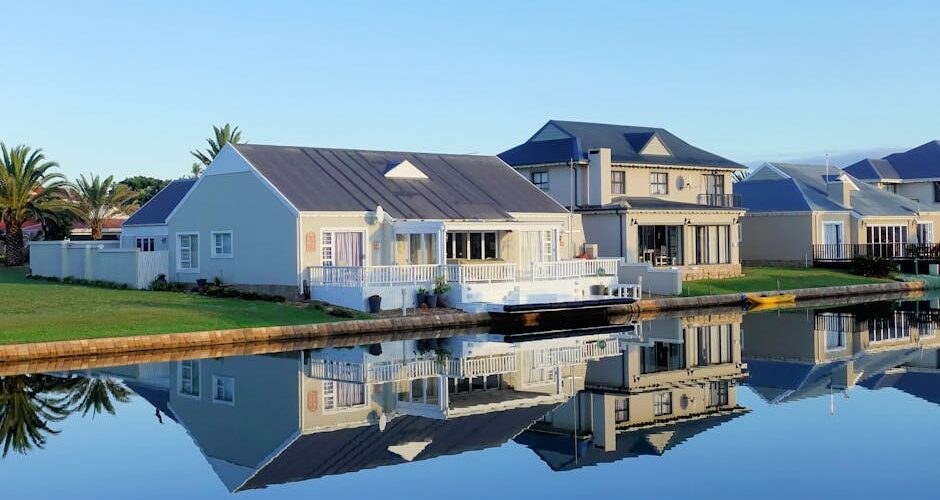The Basics of Real Estate Photography: A DIY Guide
January 9, 2025

The Basics of Real Estate Photography: A DIY Guide
Real estate photography is an essential component of the property selling process. With 87% of home buyers relying on photos to make informed decisions, having high-quality images can significantly impact the success of a sale. Whether you’re a real estate agent looking to improve your listings or a homeowner aiming to showcase your property, learning how to capture stunning real estate photographs can be a game-changer. In this guide, we’ll explore the basics of real estate photography and provide actionable tips to help you get started with your DIY journey.
Understanding the Importance of Real Estate Photography
In the competitive real estate market, first impressions matter. According to the National Association of Realtors, over 90% of home buyers search online during their home-buying process. This statistic highlights the importance of having compelling images that can capture potential buyers’ attention. Professional-quality photos not only help properties sell faster but also increase the perceived value of a listing.
Essential Equipment for Real Estate Photography
Camera and Lenses
Investing in a good camera is crucial for producing high-quality real estate photos. While a DSLR or mirrorless camera is ideal, a high-resolution smartphone camera can also suffice for starters. Consider using a wide-angle lens to capture expansive shots of rooms, as it can make spaces appear larger and more inviting.
Tripod
A tripod is a must-have for real estate photography. It ensures stability, allowing you to take sharp, well-composed shots. Using a tripod also helps maintain consistent framing across multiple images, vital for creating a cohesive visual narrative.
Lighting Equipment
Natural light is your best friend when photographing real estate. However, additional lighting equipment like flash units or LED light panels can help balance harsh shadows and illuminate darker areas. Opt for lighting that mimics natural daylight to maintain a realistic and appealing look.
Preparing the Property for a Photo Shoot
Declutter and Clean
A well-organized and clean space is more appealing to potential buyers. Remove any personal items, unnecessary furniture, and clutter to create a neutral and inviting environment. Thorough cleaning ensures that each room looks its best, free of distractions.
Stage the Space
Staging a property can significantly enhance its visual appeal. Arrange furniture to highlight the best features of each room and consider adding tasteful decor to create an inviting atmosphere. Use neutral colors to appeal to a broader audience.
Enhance Curb Appeal
First impressions start from the outside, so don’t forget to spruce up the exterior. Mow the lawn, trim bushes, and ensure the entrance is welcoming. A fresh coat of paint on the front door or a few potted plants can make a big difference.
Photography Techniques for Stunning Real Estate Photos
Compose Your Shots
Composition is key in real estate photography. Use the rule of thirds to create balanced and visually appealing images. Ensure that vertical lines, like door frames and walls, are straight and not tilted, which can be achieved by adjusting your camera’s position.
Utilize Natural Light
Shoot during the day when natural light is abundant. Open curtains and blinds to let in as much light as possible. Avoid shooting directly into the sun to prevent glare and overexposure. If shooting at night, ensure all indoor lights are on for a warm, inviting glow.
Edit Your Photos
Post-processing is an essential step in real estate photography. Use photo editing software to enhance colors, adjust brightness, and correct any distortions. Be subtle with edits to maintain a natural look. Many free and paid software options are available, such as Adobe Lightroom or Canva.
Common Mistakes to Avoid in Real Estate Photography
Over-editing Images
While editing is important, too much can make images appear fake. Avoid over-saturating colors or excessively brightening images, as this can mislead potential buyers and lead to disappointment during in-person visits.
Ignoring Small Details
Pay attention to small details, such as crooked frames, wrinkled bedspreads, or visible cords. These seemingly minor issues can detract from the overall quality of your photos.
Not Using a Tripod
Skipping the tripod often results in blurry images, especially in low-light conditions. Always use a tripod to ensure your photos are sharp and professional-looking.
Conclusion
Mastering the art of real estate photography is a valuable skill that can greatly enhance your property listings. By understanding the importance of high-quality images, investing in the right equipment, and applying effective techniques, you can capture stunning photos that attract potential buyers. Remember to prepare the property meticulously, compose your shots thoughtfully, and edit your images with care. With practice and attention to detail, your DIY real estate photography can stand out in the competitive market, leading to faster sales and higher property values.
By implementing the tips and strategies outlined in this guide, you’re well on your way to becoming proficient in real estate photography. Whether you’re shooting with a professional camera or a smartphone, the key is to focus on quality and presentation. Happy shooting!